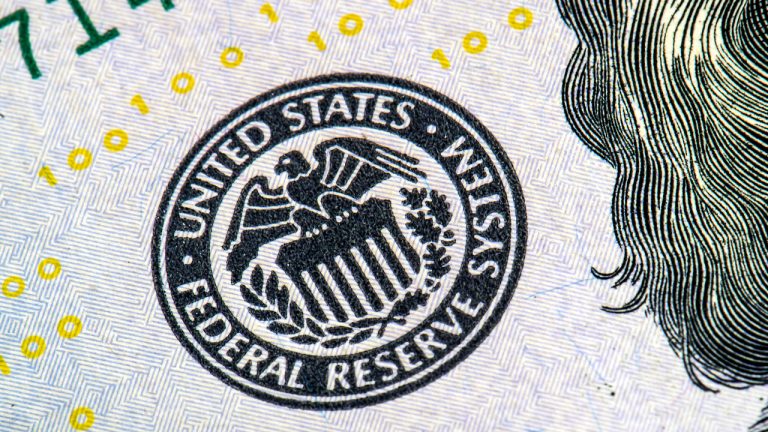
Silicon Valley Bank and Silvergate Bank were crucial to many in the cryptocurrency industry, and it’s fueling theories that regulators encouraged their downfall.
Global economic conditions are tightening; interest rates are in flux; and inflation has yet to be curbed. Considering the economic headwinds, the fact that Silvergate Bank, Silicon Valley Bank and other banks are breaking is not surprising.
But why now? Quickly rising interest rates are extremely disruptive to banking models, but the collapse of these particular banks has raised eyebrows. It just so happens that these banks are important to the crypto industry.
Selective enforcement in service of an agenda
Government agencies often use the selective enforcement of convoluted or unclear rules and regulations to pursue agendas. They can then defend the action by saying that the public’s interest was at stake.
Here’s the analogy: An apartment building needs to be removed for an upcoming freeway expansion project. The choices are to either execute eminent domain, a scenario where the government has the ability to overrule all leases and ownership and take control of the property. This would not be a popular decision with the community. There is another option. The local government could simply not enforce pre-existing regulations around maintenance and upkeep, thus letting the property slip into disrepair.
When I warned about chokepoint a month ago, I didn’t think in a million years that they would go 100x further and actually take down the top 3 crypto-facing banks. It’s breathtaking. And this wasn’t an accident. It was a demolition https://t.co/HacUQfUWWF
— nic carter (@nic__carter) March 13, 2023
A government inspector shows up. The property needs major updates or it will have to be condemned. The property owner cannot afford to get the property up to code. And the inhabitants must move and be relocated for their own safety.
This is the way the government works.
The government sets up broad rules and regulations — selectively enforces them — and creates a situation where the outcome they need is achieved. They skirt direct accountability and public ire but achieve the action needed.
Market conditions are the set-up
As market conditions begin to tighten, businesses that are discretionary and speculative suffer first — e.g., businesses such as startups, restaurants and hedge funds. Thus, banks in the tech and crypto sectors become weakened first. Most banks focus on serving specific industries. If a bank’s customers are failing, the bank is in a precarious position.
I guess I’ll be the first @ewarren critic to do what’s right and publicly thank her for her part in accelerating #Bitcoin When history books are written, Operation Chokepoint and Warren facilitating a bank run may prove to be the “proverbial straw” that broke fiat’s back.
— John E Deaton (@JohnEDeaton1) March 17, 2023
If a bank is publicly listed, once public investors understand the predicament, the results are catastrophic. SVB tried to raise additional capital via public markets to bail themselves out, but markets caught wind and went short. Depositors fled to “safer” banks. A classic bank run ensued. The market, in effect, prepped the bank for regulatory intervention.
Regulators take full advantage
The failure of Silvergate and SVB and the takeover of Signature have arguably signaled the start of a regulatory effort to actively cull crypto banks. If crypto can be surgically separated from traditional banking, this solves many perceived problems for regulators. Once crypto on-ramps are eliminated, the category can be aggressively regulated without the perception from the public that an investment opportunity is being taken away.
Good news: we’re not all conspiracy theorists
— Lizzy Fallon (@FallonLizzy) March 16, 2023
Bad news: “chokepoint 2.0” appears to very well be legit https://t.co/cQ8ykByInb
However, this is not a conspiratorial plan. Rather, the regulators are taking advantage of balance sheet weakness and poor banking practices to set up scenarios where it then seems logical that they should intervene. There was no bank run at Signature. Regulators took the advantage of a chaotic situation to pursue an agenda.
Startups, especially crypto startups, are by their very nature speculative. Blockchain at scale is an “unknown quantity” of speculation due to a lack of regulation. Recall the analogy above. The lack of oversight and regulatory direction has led financial institutions that serve tech and crypto companies to push the boundaries.
Because of macro market conditions, that type of experimentation has created a situation that puts these banks on the edge of solvency. As regulators step in to “save the day,” they get a two-for-one deal. They are perceived to have the public’s interest in mind as they eliminate critical functionality for the crypto industry.
Contagion is a meme
No bank can survive a bank run. Fractional banking has led to a system where banks simply do not have the assets to entirely cover customer deposits. If investors begin to question the stability of a bank and start to withdraw deposits, that bank will either fail or need to be bailed out. Contagion is a meme that, like other memes, is built on a deep, potentially uncomfortable truth. Banks are not as stable as the public is led to believe.
Related: Why isn’t the Federal Reserve requiring banks to hold depositors’ cash?
Nic Carter calls this recent regulatory focus on crypto banks “Operation Chokepoint.” However, bank failures accelerated by regulatory targeting destabilize the perceived stability of the entire financial system. We see this as runs on institutions like First Republic — a traditional medium-sized bank — play out. More runs are coming.
Market forces opened the door for regulators to aggressively cull crypto banks through controlled demolition. But the demolition has focused investors on existing deep systemic risks. The controlled demolition might serve the immediate agenda, but contagion is on the brink.
This article is for general information purposes and is not intended to be and should not be taken as legal or investment advice. The views, thoughts and opinions expressed here are the author’s alone and do not necessarily reflect or represent the views and opinions of Cointelegraph.










